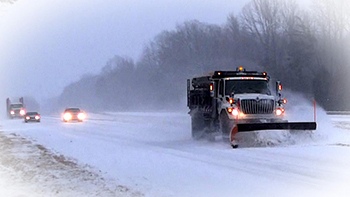6 Tips To Prepare You Car For The Cold
By Tom Catuosco
 Winter is Coming. Those words aren’t only relevant to House Stark, but to anyone who has to drive in snow, sleet, & freezing temperatures. Winter driving can be much more treacherous than driving in other seasons. Winter winter weather also puts greater stress on your vehicle. Here are tips to keep you safe and moving when driving your car during winter.
Winter is Coming. Those words aren’t only relevant to House Stark, but to anyone who has to drive in snow, sleet, & freezing temperatures. Winter driving can be much more treacherous than driving in other seasons. Winter winter weather also puts greater stress on your vehicle. Here are tips to keep you safe and moving when driving your car during winter.
Emergency Supplies - You should keep some supplies in your car in the event it should break down or get stuck in snow -
Small shovel, blanket, bag of salt, sand or gravel, flares, jug of pre-mixed coolant, bottle of engine oil, flashlight, ice scraper & brush, jumper cables, extra windshield washer fluid.
The small shovel comes in handy to dig out your tires if you run off the road. A regular garden type shovel is better in this situation than a snow shovel, as the pointy head is better for digging compacted snow in tight spaces. The bag of salt, sand or gravel will serve to help gain traction for your tires if you’re trying to get your car unstuck. The flares will help other motorists see you when you're on the side of the road.
With the jug extra engine coolant, it’s important that it is pre-mixed: a 50/50 mix of antifreeze and distilled water. You can buy pure antifreeze, mix it with distilled water yourself, and put it in a jug to keep in your car, or just buy the pre-mixed coolant off the self. The pre-mixed is a little more expensive, but more convenient.
Tires - Traction is extremely important during winter driving conditions. If your tires have poor traction, your car will be difficult to control and dangerous on snow covered roads. Check that your tires still have sufficient tread. If the tread is worn, replace your tires immediately. Good all-weather tires should be fine for most people. If you live in an area that sees more snow than average, you may want to consider mounting specific winter tires on your car. Winter tires use specially formulated rubber compounds that are meant to stay soft and provide traction in cold temperatures. Winter tires also have special tread patterns designed to provide better grip in snow than regular tires.
Belts & Hoses - Extremely cold temperatures can affect your engine hoses and belts. They’re made of rubber and rubber parts can become prone to failure during really cold weather. To avoid being stranded on the side of the road in the winter due to an unexpected burst hose or broken engine belt, make sure you inspect them before the start of winter. Replace any hoses or belts that appear worn, or are approaching the end of their suggested operating age.
Wiper Blades & Fluids - Wiper blades are a consumable item. They wear and need replacement from time to time. It’s a good idea to check them and replace, if needed, before the weather starts getting bad. You should also keep your windshield washer fluid topped off, so it won’t run out when you need it. Washer fluid can help melt a light coating of snow and ice from your windshield, as well as help your wipers clean off the road salt spray that inevitably coats car windows when driving during messy winter storms.
Check Defroster & Heater - You should make sure your car’s heater and defroster are functioning properly before winter sets in. Not only do you want to be comfortable & warm instead of freezing when you’re driving, but your defroster is a necessity for safe winter driving. A working defroster is needed to keep windows from fogging and keep ice from building up on your windows. Few things are more dangerous than somebody driving down a busy snow covered road with one hand on the wheel and the other hand futilely trying to wipe fog from a patch of the windshield. Without a proper field of vision, you can crash into someone or something. If your defroster isn’t working, be sure to get it fixed.
Check Battery - Cold weather is very hard on car batteries. When the thermometer goes down to the freezing mark, a car’s battery can lose more than a third of its strength. It loses even more of its strength the colder it gets outside. Starting your car in winter temperatures requires almost twice as much current as it does in warmer weather. If your battery is old and weak to begin with, cold temperatures could mean you won’t be able to start your car and go to work one morning.
Because of your battery’s importance, it’s critical to make sure it is strong and not at the end of it’s life. You can have your battery checked by a mechanic or at most autoparts stores to see if it’s still in good shape. Most car batteries last around 5 years, so if your battery is older than than that, getting a new one before the winter starts is a good idea, even if the battery isn’t showing signs of weakness yet. You should also keep jumper cables in your car. In the event your battery goes flat, another motorist may be able to give you a jump and get you on your way.
A little preparation on your car ahead of the winter driving season is a good idea. These winter prep tips for your car should help.